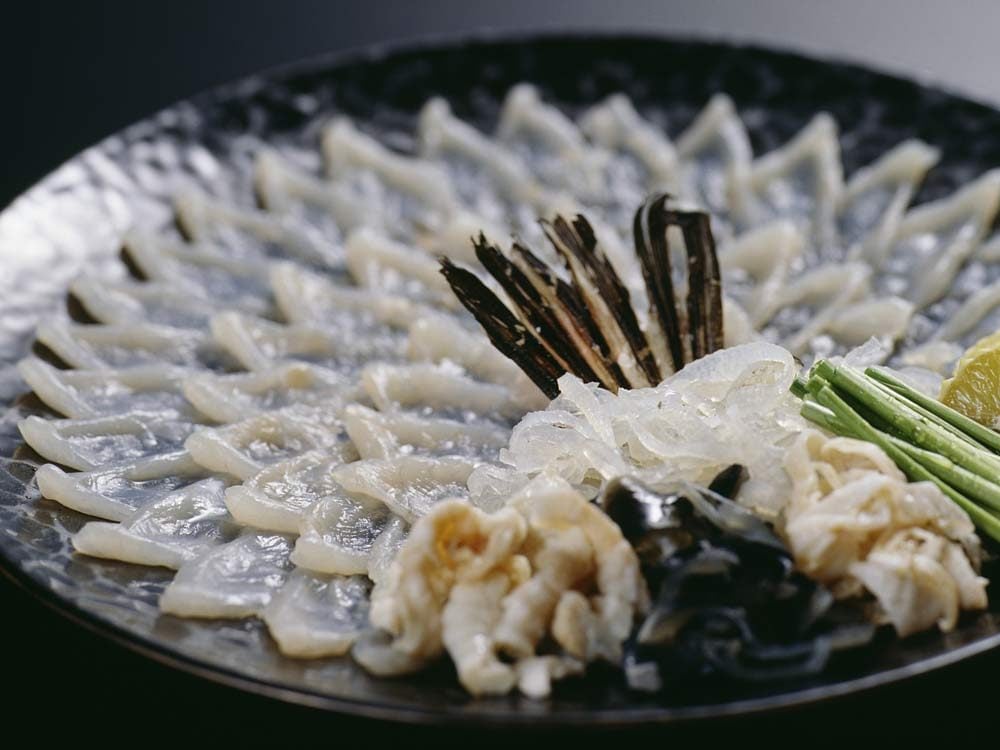
Fugu – Japan
Fugu, a Japanese pufferfish, contains enough poison to kill 30 people, but rest assured—it’s near impossible you’ll fall ill while dining on it. That’s because the ultra-skilled chefs who prepare this expensive Japanese delicacy must undergo years of training—along with obtaining a special license—before being able to serve fugu. The fish can be eaten in a stew, grilled or as paper-thin sashimi. Those wishing to try this delicacy should visit Japan during October to March when fugu is in season.
Visiting Japan for the first time? Make the most of your time there with this handy guide.
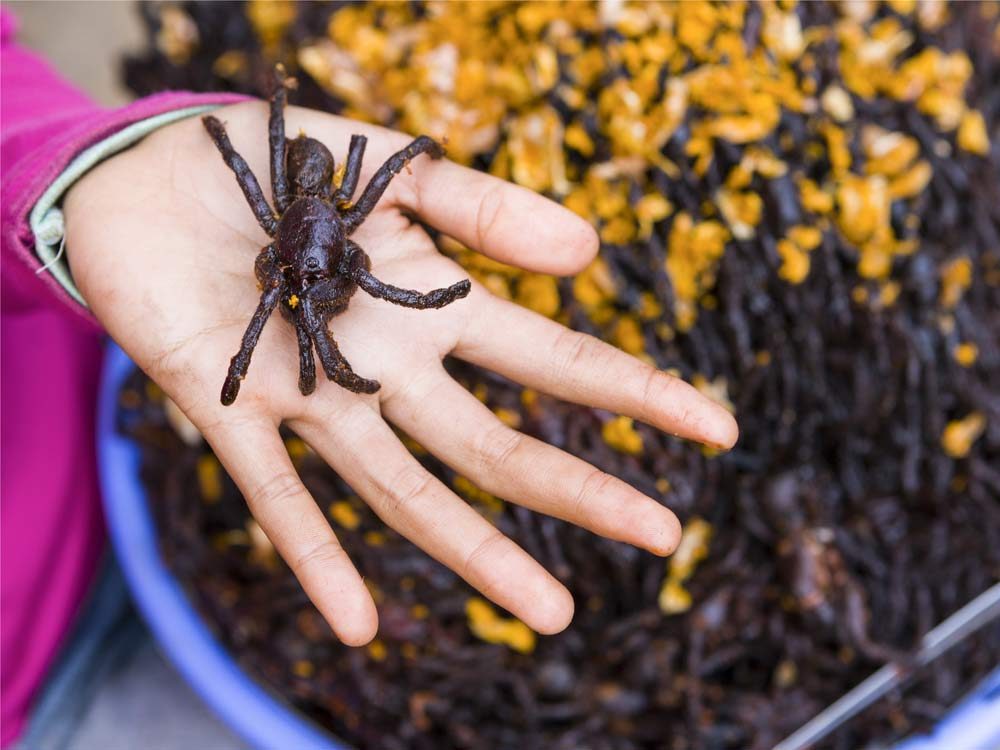
Fried Spider – Cambodia
Available throughout Cambodia, but a specialty in the town of Skuon, these delicacies are deep-fried in garlic oil until crunchy on the outside and soft on the inside. Typically of the tarantula variety, the practice of eating these spiders may have started during the brutal reign of the Khmer Rouge, when poor villagers had to find alternative sources of food. Spiders are often sold to travellers passing through town and looking for a quick snack. Besides being full of protein, rumour has it they are even said to increase the beauty of the consumer.
These iconic attractions in Southeast Asia will not leave you disappointed.

Prairie Oysters – Canada
Made from bull testicles, this dish also goes by the name Rocky Mountain Oysters. Found throughout cattle ranching country, curious eaters wanting to try the Canadian version are advised to head to Bottlescrew Bill’s in Calgary.
Here are the best things to do in Banff—besides skiing.
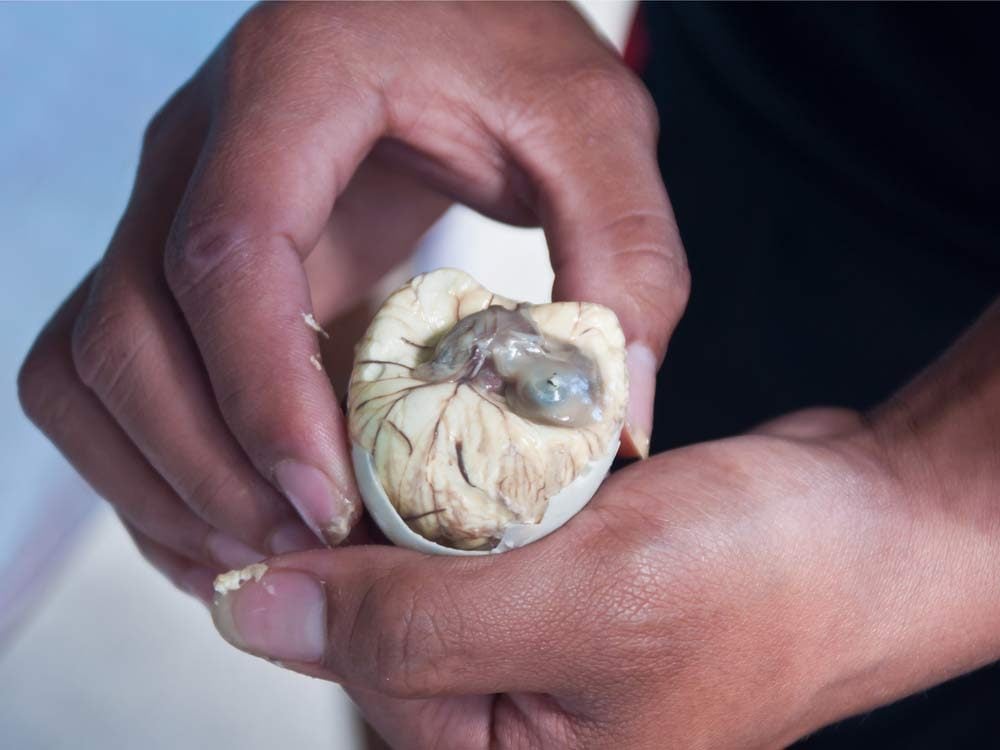
Balut – The Philippines
A staple of Filipino culture for hundreds of years, balut is a fertilized duck egg that has been incubated for a specific period of time. Typically eaten with a little seasoning of chili, garlic and vinegar, all the contents of the egg are consumed, including the unhatched baby duck. A common street food, balut is often chased down with a cold beer—just crack, slurp and bite.
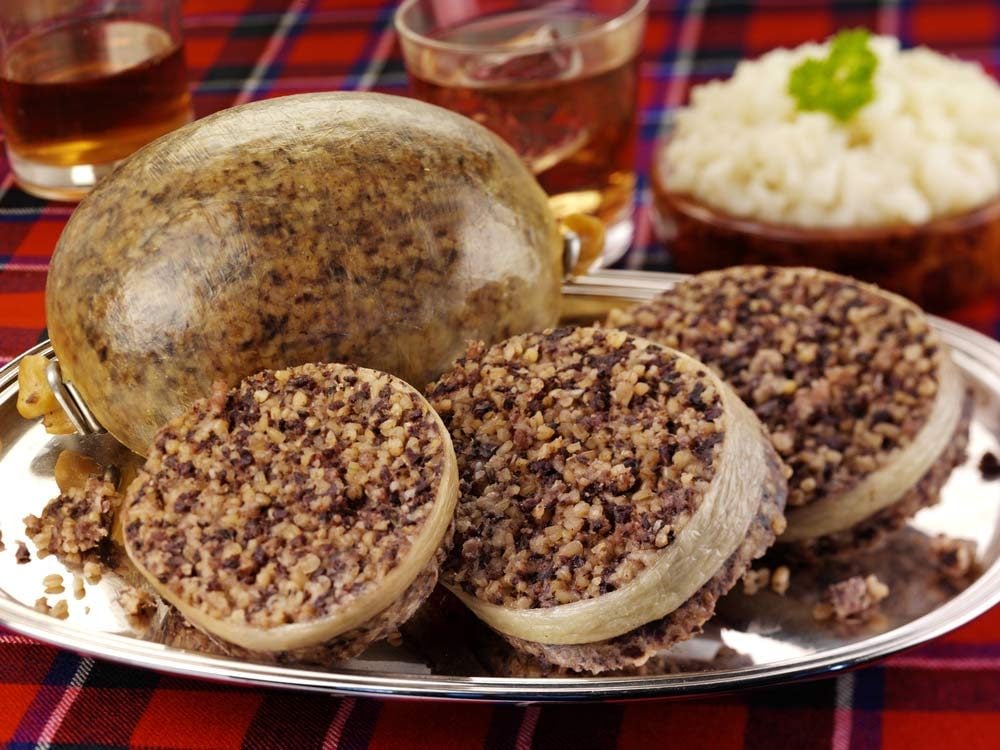
Haggis – Scotland
Considered Scotland’s national dish, this mixture includes sheep’s heart, liver and lungs, onion, oatmeal, spices, and stock. Traditionally stuffed into a sheep’s stomach and simmered, this hearty dish dates back to the 1400s. Typically eaten with tatties and neeps (that’s mashed potatoes and turnips to you), Haggis is often served with a dram of Scotch whiskey to get it all down. Today, Haggis is conveniently available ready-made from the grocery store, and is a great source of iron and fibre.
Here are 10 of the best places to visit in Scotland!
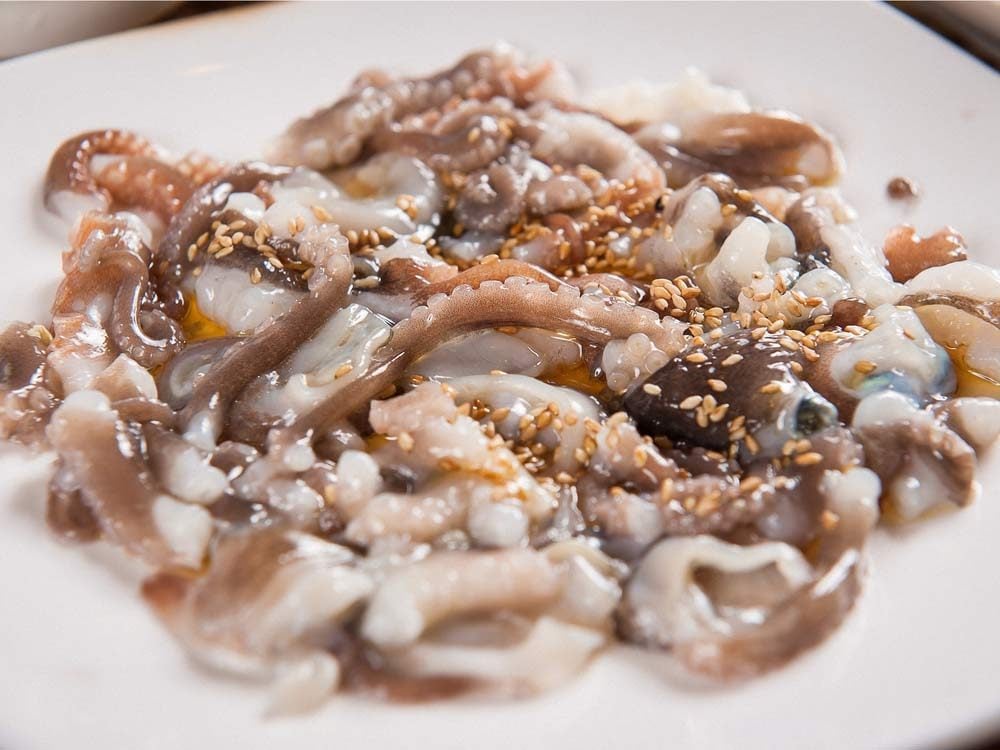
San-nakji – South Korea
A South Korean delicacy, this dish of live octopus is eaten either whole or in pieces—depending on the size of the specimen. Served raw and usually only with a splash of sesame oil, it’s so fresh that the tentacles are still moving.
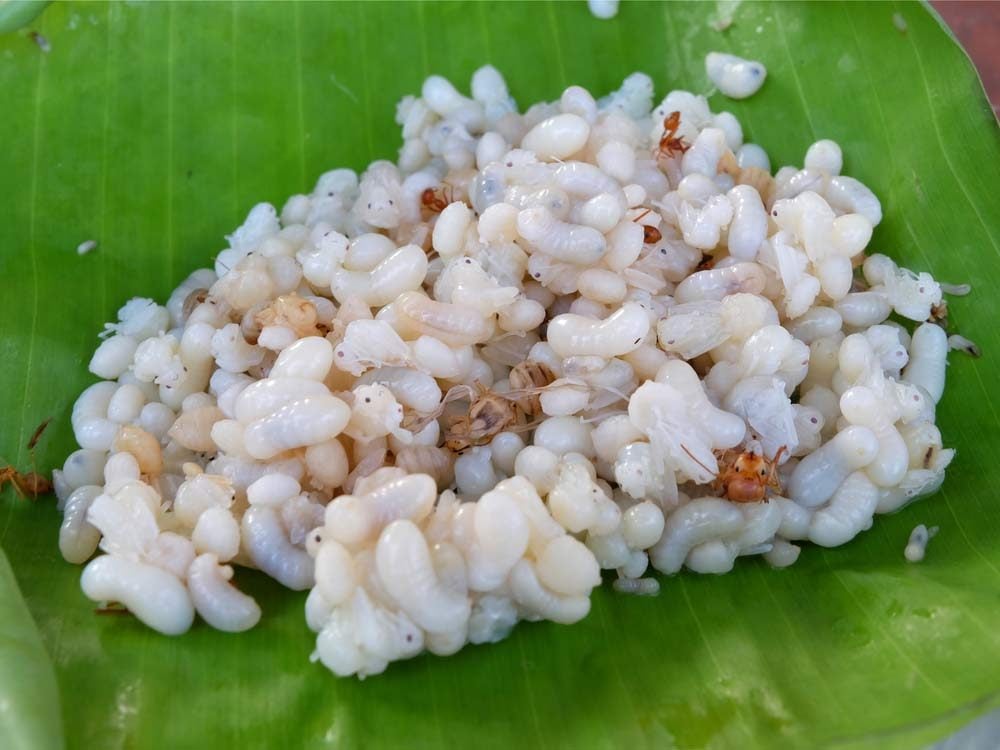
Escamoles – Mexico
It may look like a grain salad, but this dish is actually made up of ant larvae. Often called insect caviar, escamoles are considered a delicacy in Mexican cuisine and consumption dates back to the time of the Aztecs. Eggs are harvested from the root systems of the maguey and agave plants, and the tiny larvae can be found in tacos, omelettes or just on their own. When crisped up with butter or deep-fried, escamoles have a slightly nutty taste.
Discover the best things to do in La Paz—Mexico’s best-kept secret.
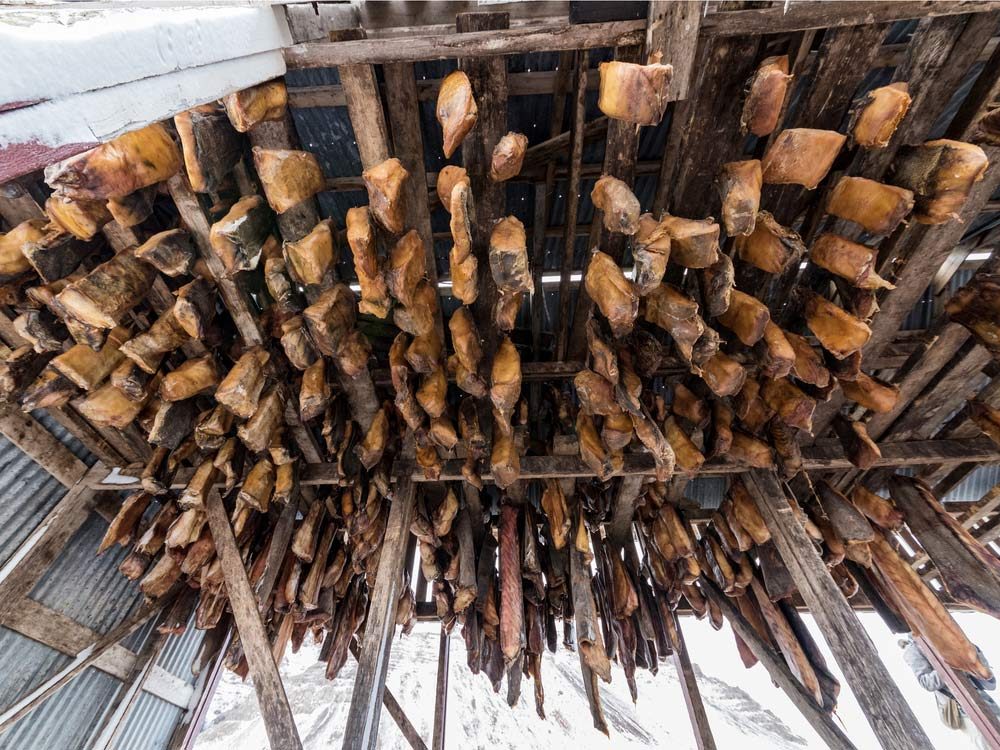
Hákarl – Iceland
A national dish of Iceland, Hákarl is a Greenland shark that has been allowed to ferment and decay—if fresh, the shark is actually poisonous and cannot be eaten. Hákarl is known for its strong ammonia smell and fishy taste, which is why it’s recommended that beginners chase the fish down with a shot of local spirit. Icelanders are able to eat their Hákarl year-round, as the fish is sold in regular supermarkets.
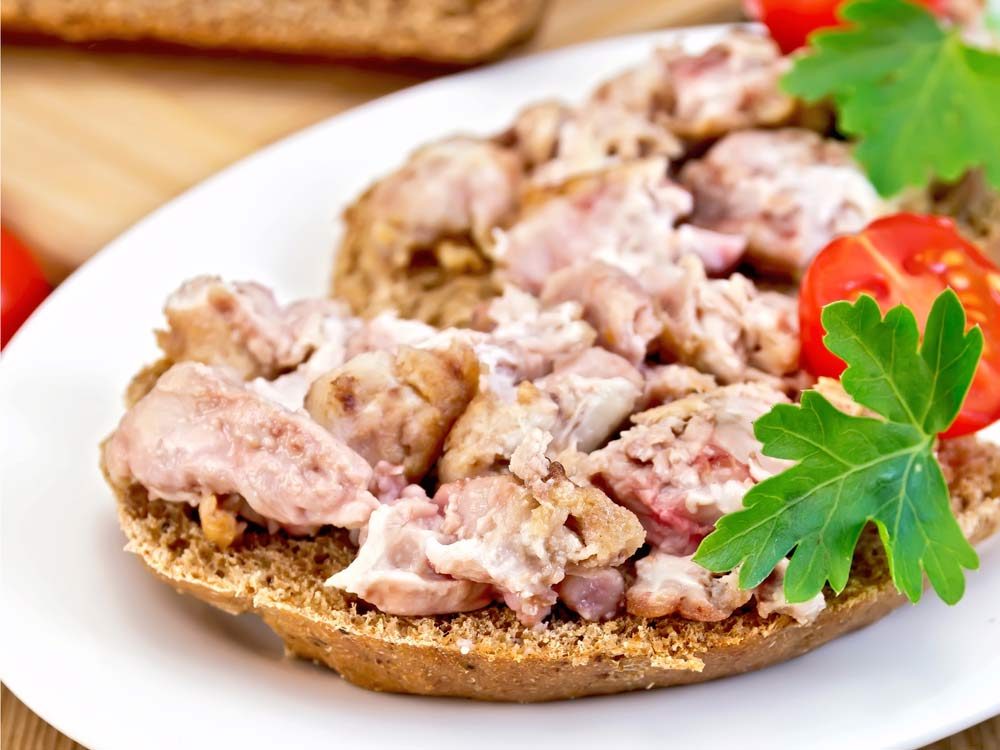
Fried Brain Sandwiches – United States
In some areas of the USA, particularly in the Ohio River Valley, this delicacy is still found on the menu. Made from sliced calves or pig brains that have been heavily battered and deep fried, this dish was brought over by immigrants from Germany and Holland who were keen on eliminating any sort of waste. Heavy on the calories, these sandwiches are typically served accompanied with mustard and pickled onions. Most of the flavour in the sandwich comes from the batter, with the brains having a mild taste and custardy texture.
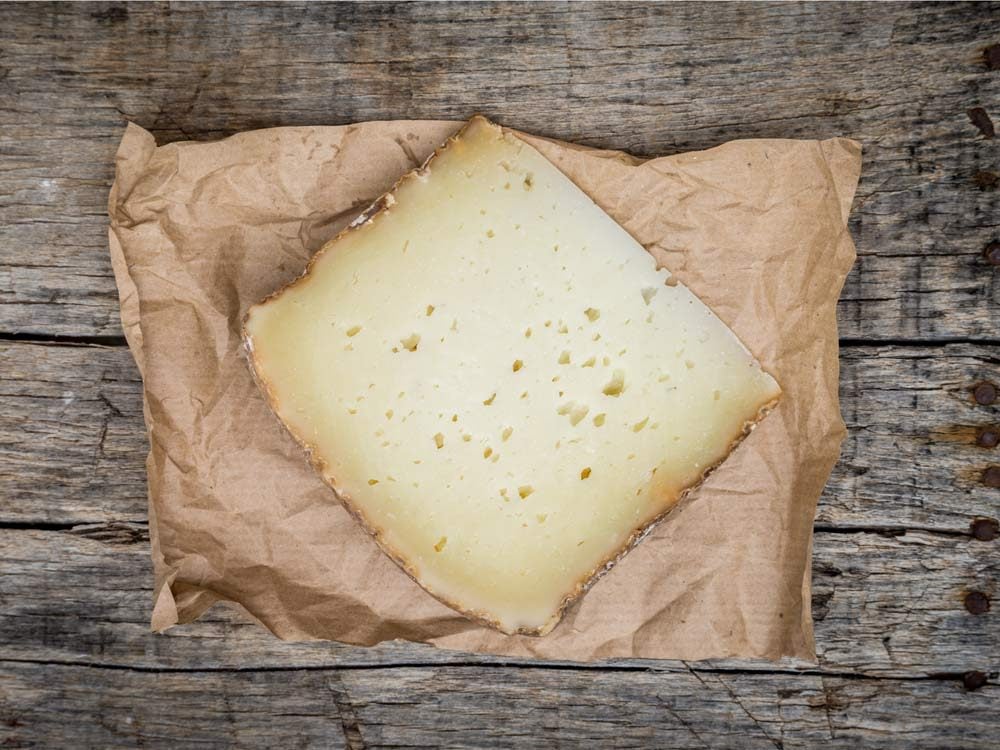
Casu Marzu – Italy
Casu Marzu is creamy and soft—and also happens to contain thousands of live maggots. This Sardinian delicacy, which literally translates to “rotten cheese,” is made by allowing flies to lay eggs on the surface of Pecorino cheese that has had the top cut off to allow for easy access. When the eggs hatch, the larvae eat through the cheese, breaking down the fats and softening the usually hard middle. Strong and rich, the aftertaste of this pungent cheese lasts for hours.
With nearly 200 countries to cover, it would be quite a feat to see the entire planet. With these gorgeous travel photos from around the globe, you’ve got yourself a head start!